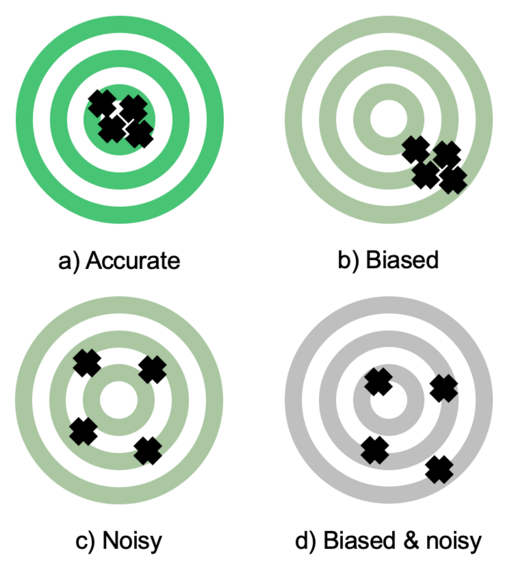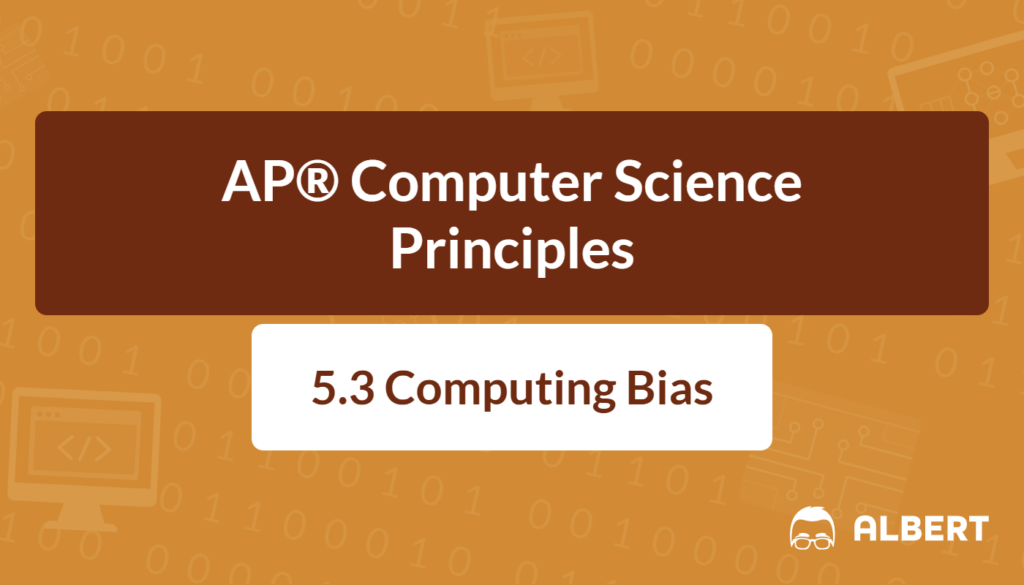Algorithm bias is a situation where a computer program produces results that unfairly favor or harm certain groups. This happens when an algorithm, which is a step-by-step set of instructions, reflects human biases or uses unbalanced data. Therefore, understanding how this bias emerges in computing is essential for anyone interested in making technology fairer.
Imagine a clothes-sorting machine that was only trained on blue and red shirts. Next, it encounters a green shirt and categorizes it incorrectly. This everyday analogy shows how algorithms can mislabel or misjudge data when they are not trained on a diverse set of examples. As a result, learning to recognize and address potential bias in algorithms is a key skill for high school students preparing for AP® Computer Science Principles.
What We Review
What Is Algorithm Bias?
Algorithm bias occurs when a program consistently treats data in a way that produces imbalanced outcomes. This could mean showing job ads mostly to one gender or misidentifying certain faces in photos. Essentially, the algorithm develops “blind spots” due to the data it uses or the way it is designed.
To illustrate, think of a music recommendation app that only learned from popular mainstream songs. Consequently, it might rarely suggest indie or international music. This scenario is an example of bias because the algorithm’s narrow input data leads to a limited set of recommended songs. In computing innovations, these “blind spots” can impact millions of users, making it crucial to understand how and why algorithm bias happens.

Examples of Bias in Everyday Technology
Algorithms power countless everyday tools, from social media feeds to voice assistants. However, potential bias can creep into these systems. For instance:
- A voice recognition service might struggle to understand certain accents because it was primarily trained on speakers from one region.
- A hiring platform might rank resumes lower if they contain words more common to certain backgrounds, reflecting biased historical hiring data.
These examples of bias highlight the importance of developing fair, inclusive algorithms that work for all users.
Sources of Algorithm Bias
Human Biases Influencing Algorithms
Human biases play a key role in shaping an algorithm’s behavior. Conscious bias occurs when a designer knowingly inserts favoritism or prejudice into code. However, unconscious biases are often more challenging to detect because they reflect the developer’s unaware preferences. Think of a teacher grading homework with a hidden soft spot for certain handwriting styles. In the same way, programmers sometimes bake unintentional bias into an algorithm’s logic.
A real-world example is an early facial recognition system that performed poorly on darker skin tones. It was designed and tested by teams lacking diversity, so the algorithm did not learn enough about the full range of human faces. As a result, it experienced frequent misidentifications, showing how a homogenous group of creators can overlook critical details.
Data Biases
Data bias occurs when the information fed to an algorithm is unbalanced or non-representative of the real world. If the training data for a language-processing app contains mostly English tweets from urban areas, it may fail to understand rural slang or other languages. Therefore, the system’s performance heavily depends on having sufficient variety in its training data.
For example, historical hiring data might reflect past social inequalities, such as excluding qualified applicants from underrepresented groups. While an algorithm sees this as “normal” hiring trends, a human observer recognizes that the data is incomplete. Consequently, the system continues to reinforce biased selection practices. This cycle can persist unless programmers carefully adjust or expand the data set.
Implications of Algorithm Bias
Effects on Individuals and Communities
When algorithms display bias, real people are affected. For instance, misrepresentation in facial recognition technology can lead to wrongful detentions, as security systems might flag innocent individuals. As a result, entire communities lose trust in the technology.
Consider a scenario where an image-based social media platform removes photos with darker skin tones, falsely marking them as inappropriate. This type of bias undermines both personal expression and fair treatment. Therefore, addressing algorithm bias is not just a technical challenge; it also has serious social implications.
Consequences for Businesses and Organizations
Bias can harm the reputation of businesses, universities, and even government agencies. If people discover that a company’s algorithms repeatedly discriminate, trust in that organization quickly fades. Moreover, some regions have introduced legal guidelines that penalize companies using software with unfair practices. As a consequence, ignoring algorithm bias can lead to costly lawsuits and damage public image.
Developers who are aware of these risks have a responsibility to address them. Consequently, more teams now prioritize fairness assessments and employ diverse experts before releasing new products. This proactive approach helps reduce potential bias and protects both users and organizations.
Addressing Algorithm Bias
Steps Programmers Can Take
Programmers can take several precautions to reduce algorithm bias:
- Seek Diverse Perspectives
- Including people from various backgrounds in the development process can reveal blind spots and highlight overlooked issues.
- Test and Validate Thoroughly
- Running multiple checks on different user groups helps detect subtle biases before software is widely adopted.
- Regular Updates and Feedback
- Releasing updates based on user feedback ensures that issues are fixed and fairness is continually improved.
For instance, think of an algorithm as a washing machine cycle. If the first wash leaves stains, running a second cycle with the right detergent (updated data) might remove them. Similarly, reviewing and retraining algorithms with more accurate data can remove the “stains” of bias.
Examples of Successful Bias Mitigation
Some facial recognition systems now deliberately gather training examples reflecting the diversity of global populations. Moreover, hiring applications emphasize skills-based resumes rather than personal histories, reducing the risk of perpetuating old biases. These updates show how solutions can become more equitable through active improvements in design and data.
In practice, many teams also publish detailed records of their methods, making it easier for the public or independent researchers to spot hidden biases. This transparent approach leads to greater trust as people can see how the algorithm evolves over time.
Key Terms to Know
| Term | Definition |
| Algorithm Bias | A tendency of algorithms to favor certain groups over others due to flawed data or design. |
| Data Bias | Distortion in data that leads to unequal results in algorithm performance. |
| Conscious Bias | Awareness of biased thinking influencing decisions. |
| Unconscious Bias | Implicit biases that affect judgment without awareness. |
Conclusion
Algorithm bias is not just a technical annoyance; it has real-world consequences that can harm individuals and entire communities. Therefore, it is a major area of concern in computing innovations and software development. By understanding the root causes, such as human prejudices and unbalanced data, programmers can develop strategies to reduce or eliminate bias in their work. Moreover, including diverse voices, testing rigorously, and staying open to feedback can create fairer and more inclusive technologies. Consequently, everyone benefits when algorithms treat all users with equity. The next wave of innovators, especially students, can lead the way in ensuring that computing remains a powerful force for good.
Sharpen Your Skills for AP® Computer Science Principles
Are you preparing for the AP® Computer Science Principles test? We’ve got you covered! Try our review articles designed to help you confidently tackle real-world AP® Computer Science Principles questions. You’ll find everything you need to succeed, from quick tips to detailed strategies. Start exploring now!
Need help preparing for your AP® Computer Science Principles exam?
Albert has hundreds of AP® Computer Science Principles practice questions and full-length practice tests to try out.








